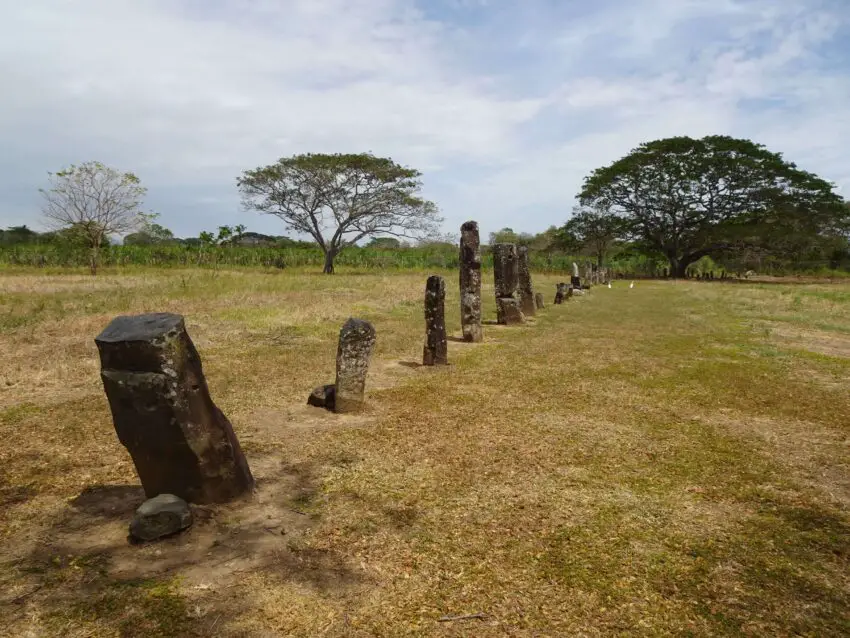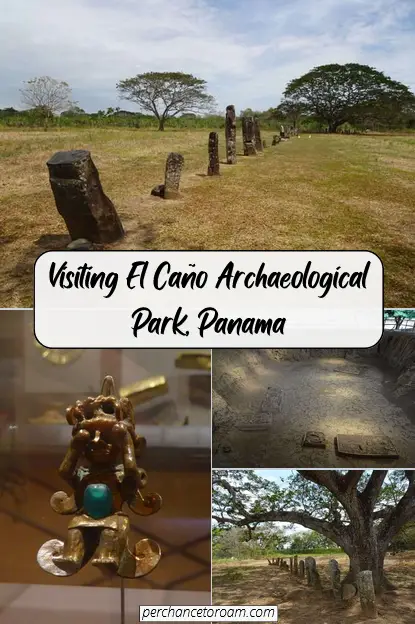As an archaeologist, I always try to learn about the prehistory of the countries I visit, but Panama doesn’t have that many archaeological sites that are open to the public (or easy to reach without your own transport).
Apart from the petroglyphs in El Valle de Antón, the only major prehistoric monument we managed to visit during our travels in Panama, was the important site of El Caño, which consists of two alignments of monoliths and several burial mounds. Here’s everything to know about visiting the site.
This post may contain affiliate links, and I might earn a small commission at no additional cost to you. For more info, click here.
The History and Importance of El Caño
A note on the sources: The information related in the post is based on our own on-site observations, the information signs in the El Caño museum and the 2020 paper: Julia Mayo Torné et al., Approach to the Study of the Phenomenon of Multiple Burials at El Caño, Panama. Latin American Antiquity 31/1, 2020, 20-39).

The Best Places to Stay near El Caño
Budget: Residencial Aguadulce (pictured)
Midrange: Hotel Interamericano
.
El Caño consists of a burial complex attributed to the pre-Columbian Gran Coclé Culture and has been dated to between about AD 700 and 1000 using radiocarbon dates from the skeletons as well as typochronological information of the pottery excavated on-site.
The Gran Coclé Culture is also associated with the nearby Sitio Conte site, which had been excavated without much documentation at the beginning of the 20th century, so El Caño remains the best investigated site of the Culture.
However, its history is not without blunders. The top of the monoliths were originally carved into anthropomorphic and zoomorphic heads, which were chopped off by US adventurer Hyatt Verril in the early 20th century and have been brought to various museums across the US.
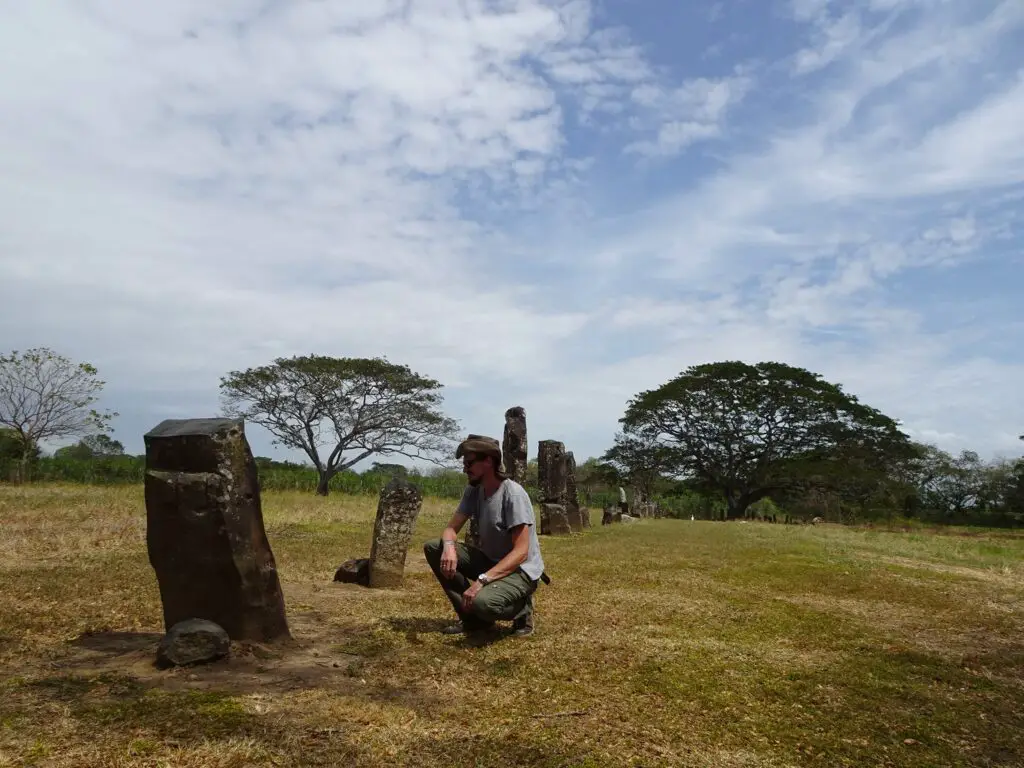
A perfect example of the fixation on finds over contexts that a lot of early archaeology suffered from (as well as of the colonial-era looting of archaeological sites, which happened all around the world).
Recent excavations by Panamanian archaeologist Julia Mayo have focused on the burial mounds and uncovered several richly equipped collective burials, some of which have been recreated in situ and can be viewed today.
What to See at El Caño
There are three main points of interest at the site today: The rows of stone monoliths, the partially excavated burial mounds and the small museum displaying mostly replicas of the artefacts found on-site.
The Rows of Monoliths
The two rows of standing slender monoliths originally were topped with carved heads of humans and animals and referred to as the ‘Temple of the Thousand Idols’ before their decapitation by Hyatt Verrill in the 1920s
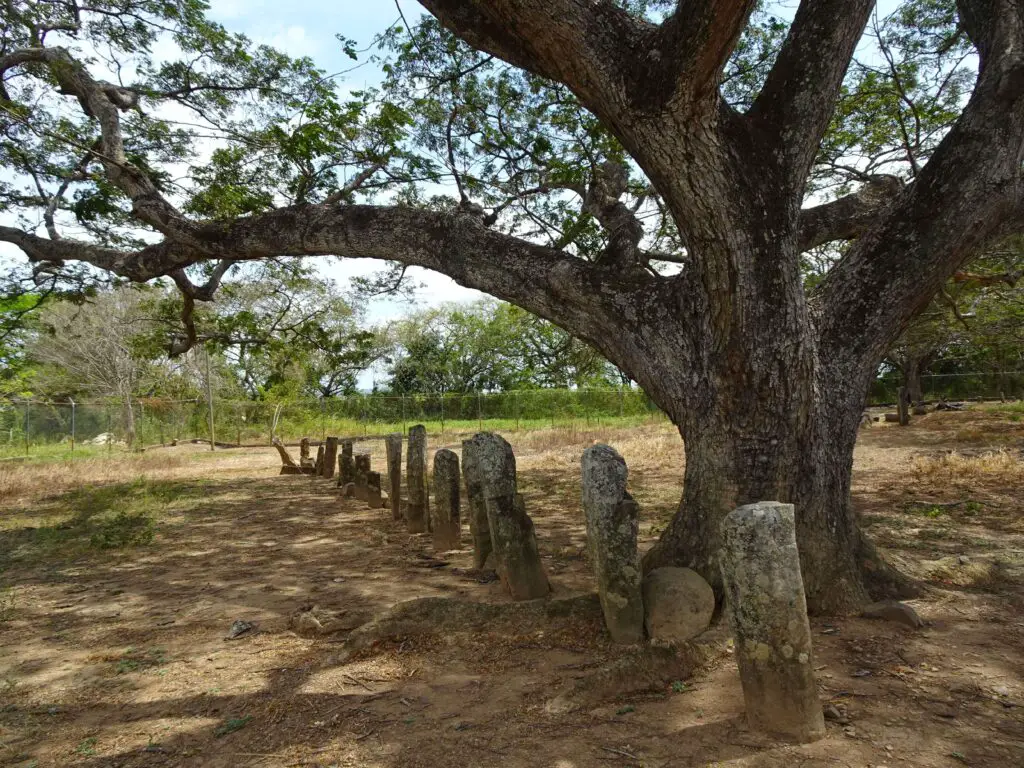
They are somewhat aligned with the outer perimeters of the two excavated burial mounds, and might have originally served as a kind of ceremonial pathway or enclosure.
Besides, it’s very likely that the effort of procuring, fashioning and erecting the monoliths would have increased the symbolic value of the burials and/or strengthened communal ties.
The Burial Mounds
When we visited the site, excavations were going on at one of the mounds, and the caretaker wouldn’t let us get close without an archaeologist present (we were there on a weekend).
The other mound has been excavated a few years past and some of the skeletons have been placed in situ in the remaining pit to give you an idea of their placement and alignment. The excavators interpret them as burials of high-status-individuals, mostly due to the amount of grave goods.
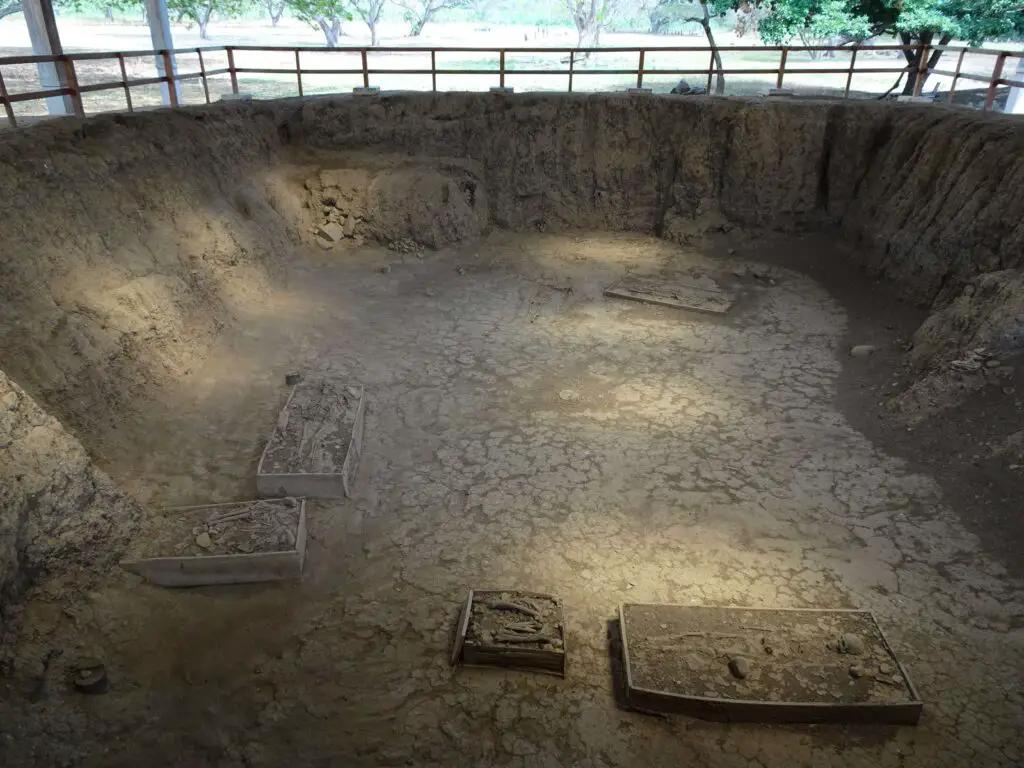
Other skeletons in the collective burials were interpreted as family members or slaves, which were sacrificed to accompany the high-status person into the afterlife, although these theories seem to be based mainly on the alignment of the dead and depictions of human offerings in the iconographic corpus of the site.
Apparently, there were also signs of beheadings and disarticulation of some bodies prior to burial, but a manipulation of the dead is a common practice in a lot of prehistoric societies, which doesn’t necessarily hint at human sacrifice.
The Museum
The small museum displays several original artefacts found in El Caño, as well as plenty of replicas, especially of golden ornaments found in the graves. Even though, they’re not original, I found the intricately decorated plaques and figures fascinating (check out the small golden seahorse).
There are also a number of painted pottery vessels (including one in the shape of an armadillo), a flute made from bone, and necklaces made out of teeth. Several small figurines depict violent acts and have sparked the idea of human sacrifices in El Caño.
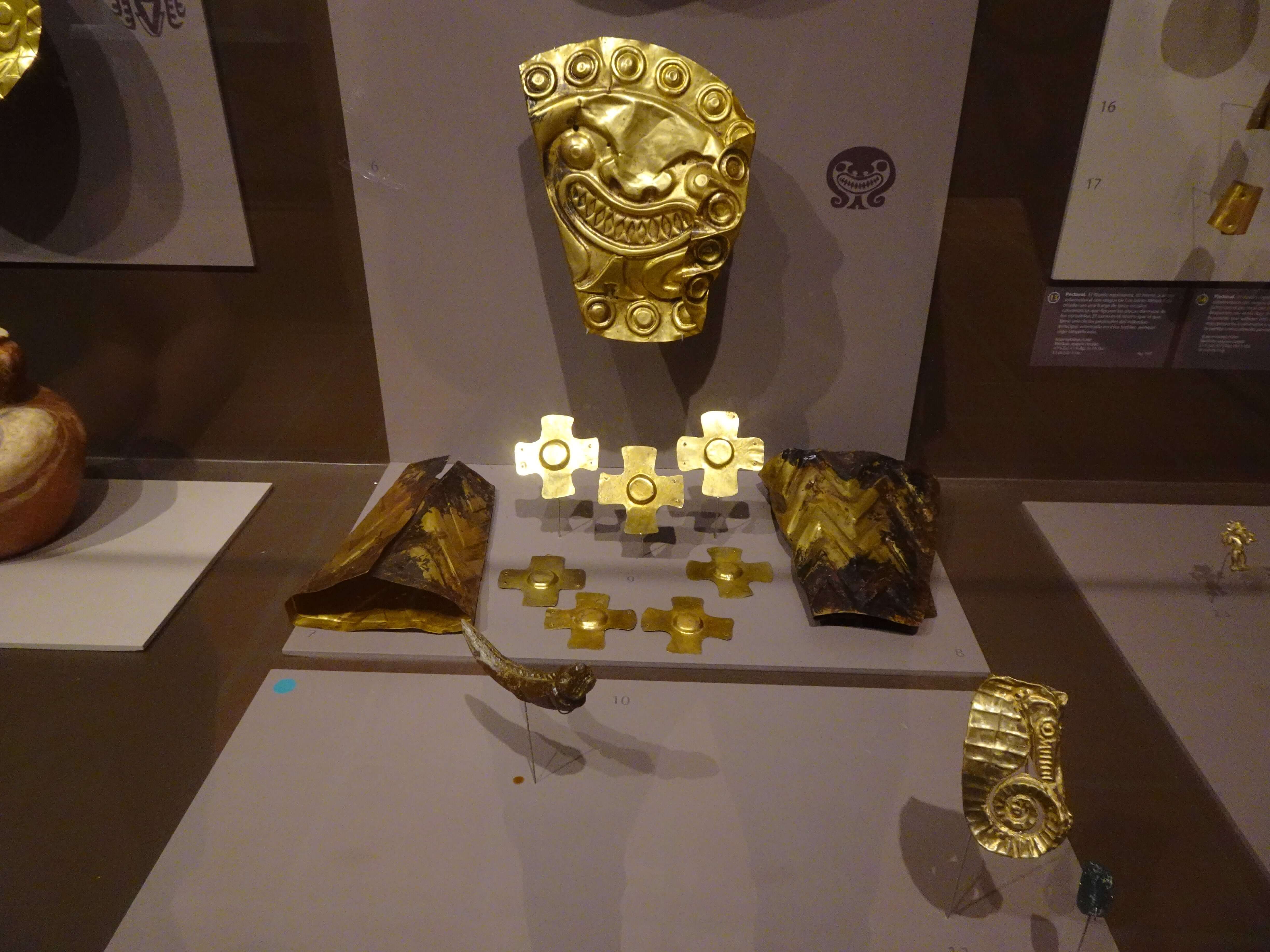

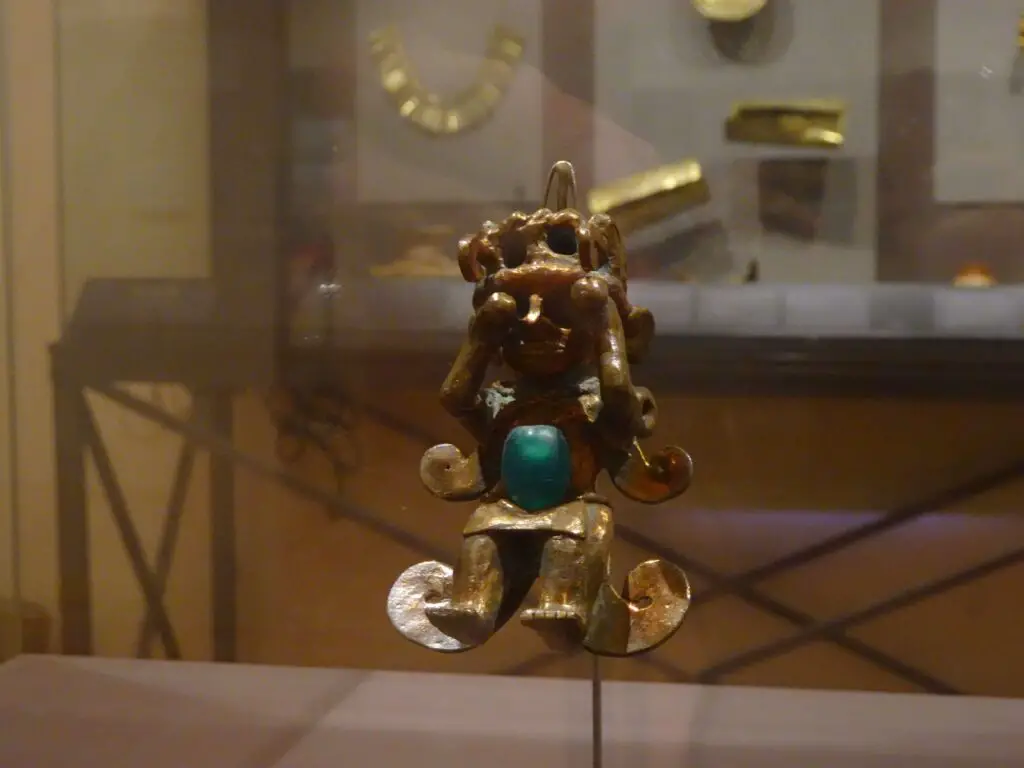
The information signs are all in Spanish and deal with the iconography of the artefacts, as well as the assumed stratification of society and theories of human sacrifice. If you don’t speak Spanish, I suggest you take a picture and feed them into a translator app.
While the museum is small, it helps put the site into context, plus if you’re there on a sweltering day, like we were, the air-conditioned interior is a heaven-sent 😂.
Visiting Nata Church Near El Caño
If you’re interested in the history as well as the prehistory of Panama, a visit to El Caño can easily be combined with a trip to nearby town of Natá de los Caballeros, which is the third-oldest town in Panama and contains a church which is said to be the oldest still existing church in the Americas (although there seem to be a few contenders claiming similar pedigrees).
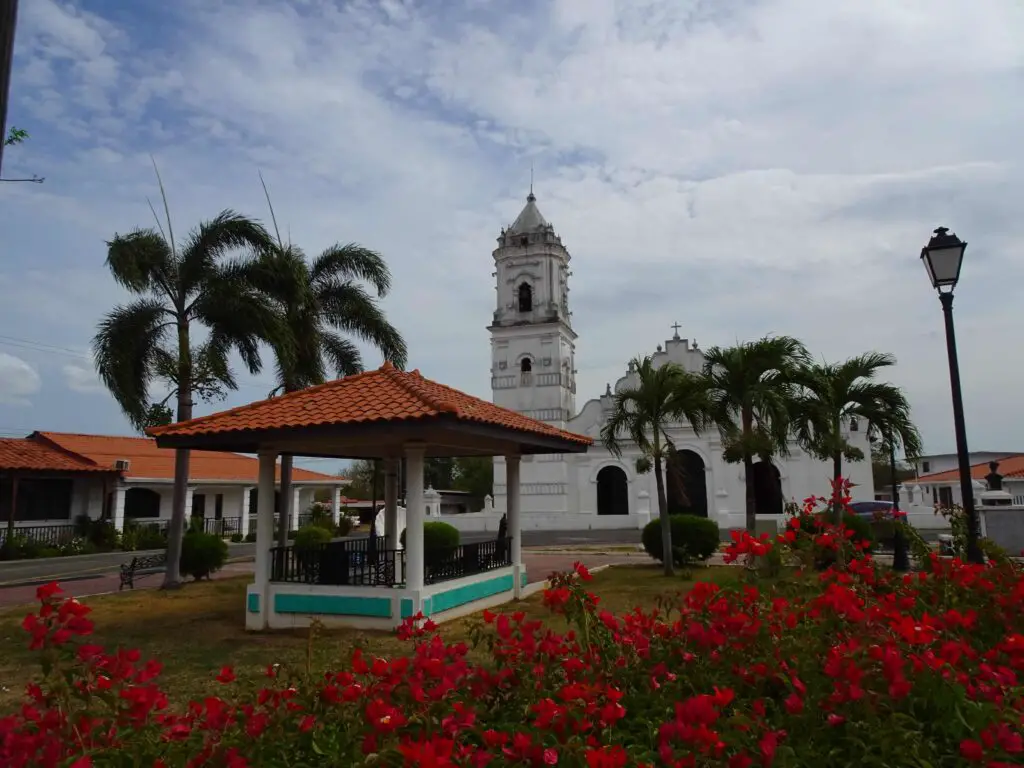
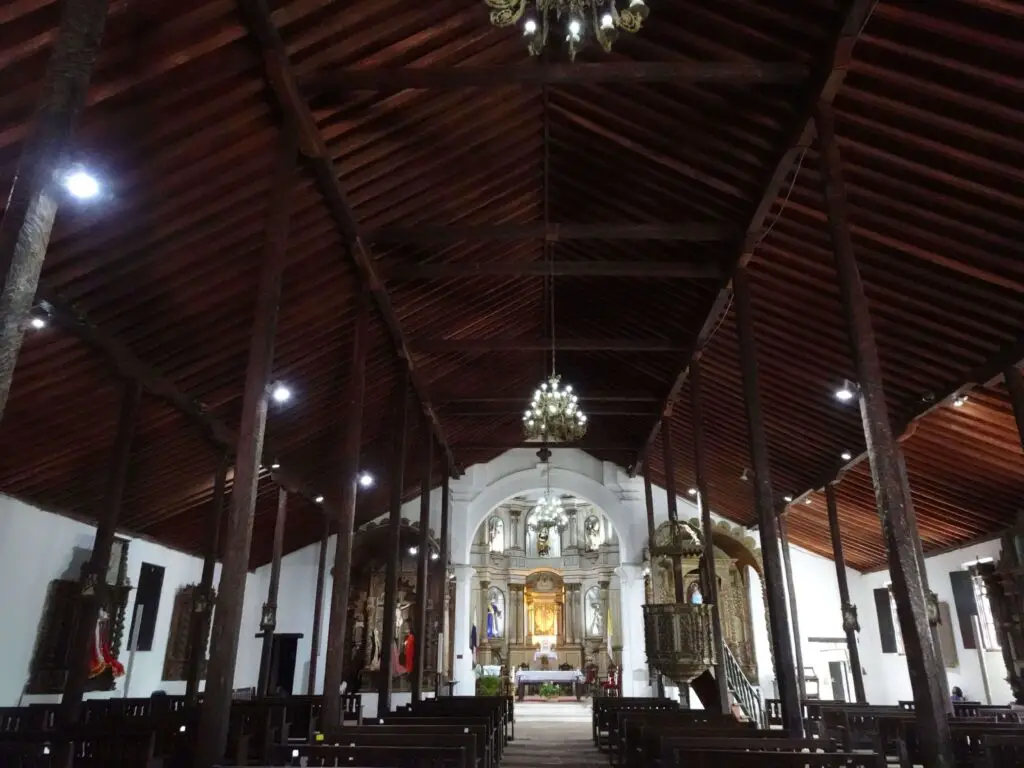
By its appearance alone, we wouldn’t have thought it to be so old, but it’s certainly a beautiful building, and the same goes for the little flower-studded Plaza de Armas it lords over. Any bus or minibus running along the Panamericana can drop you at Natá, from where you’ll have to walk for about 15 minutes to the main square and church.
Practicalities
El Caño Opening Times
When we were there, the site and museum were open from Tuesday to Sunday from 8am to 3.30pm, but make sure to check if these times are still correct before going. There’s a fence around the perimeter, so when it’s closed, you can’t even see the excavated burial mound (and only spot the monoliths from the distance).
El Caño Entrance Fee
The site is completely free to visit, but you’ll have to register with the caretaker at the small museum.
How to Get to El Caño by Public Transport
The site is close to the Panamerican Highway and buses or minibuses running between the nearest bigger cities of Penonomé and Aguadulce (or any other destinations along the highway, really) can drop you off at the turn-off for El Caño village.

From there you can either walk for about 45 minutes south through the village and then south-east to the site, or take a taxi, if one is waiting at the highway. We paid 2$ for a taxi one-way, and walked back, but you’ll have to pay more if you want the driver to wait for you to drive you back.
Where to Stay Near El Caño
The nearest town with some hotels is Aguadulce, which wasn’t exactly the prettiest place we came across in Panama. That said, it’s a convenient base and if you only stay here for a night to visit El Caño and maybe Natá it’s alright.
We stayed at the cheap Residencial Aguadulce Motel a few hundred meters south of the Panamericana. Another option is the slightly pricier (but still kind of cheap) Hotel Interamericano right by the highway, which means that it’s probably not the quietest night’s sleep you’ll ever get.
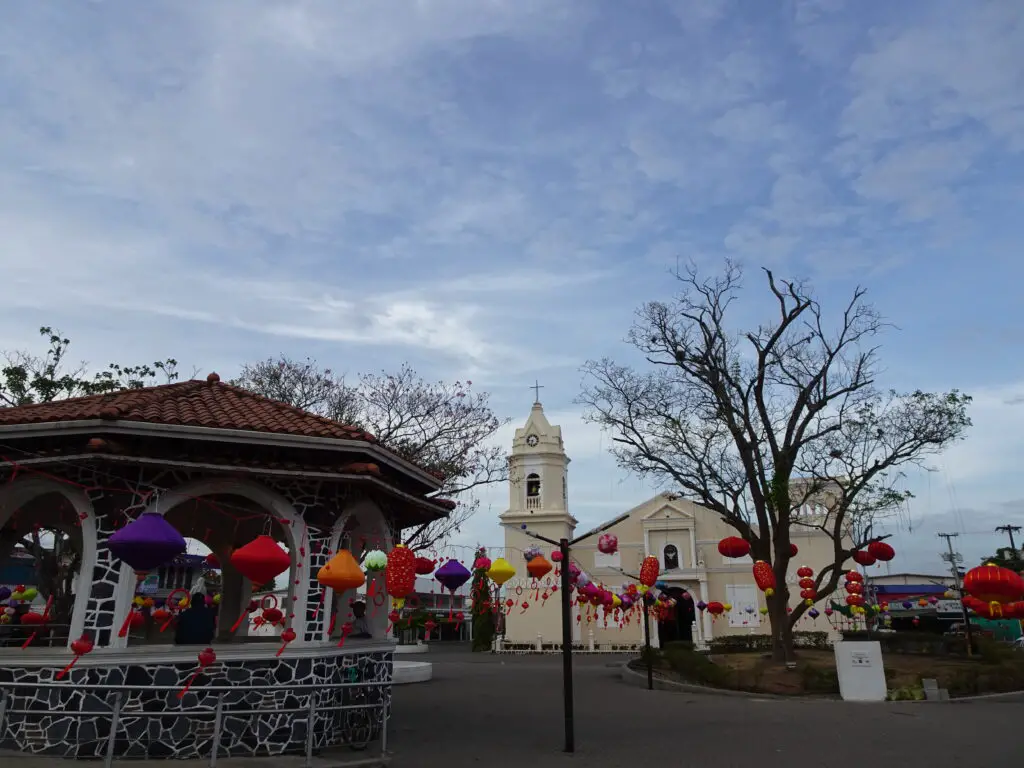
If you stay in Aguadulce, make sure to drop by Fonda La Fula on Avenida Rodolfo Chiari, which serves great Sancocho.
